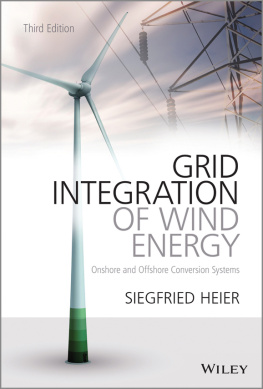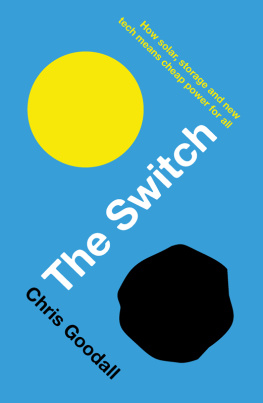Peter Kelly-Detwiler - The Energy Switch: How Companies and Customers Are Transforming the Electrical Grid and the Future of Power
Here you can read online Peter Kelly-Detwiler - The Energy Switch: How Companies and Customers Are Transforming the Electrical Grid and the Future of Power full text of the book (entire story) in english for free. Download pdf and epub, get meaning, cover and reviews about this ebook. year: 2021, publisher: Prometheus, genre: Politics. Description of the work, (preface) as well as reviews are available. Best literature library LitArk.com created for fans of good reading and offers a wide selection of genres:
Romance novel
Science fiction
Adventure
Detective
Science
History
Home and family
Prose
Art
Politics
Computer
Non-fiction
Religion
Business
Children
Humor
Choose a favorite category and find really read worthwhile books. Enjoy immersion in the world of imagination, feel the emotions of the characters or learn something new for yourself, make an fascinating discovery.

- Book:The Energy Switch: How Companies and Customers Are Transforming the Electrical Grid and the Future of Power
- Author:
- Publisher:Prometheus
- Genre:
- Year:2021
- Rating:5 / 5
- Favourites:Add to favourites
- Your mark:
The Energy Switch: How Companies and Customers Are Transforming the Electrical Grid and the Future of Power: summary, description and annotation
We offer to read an annotation, description, summary or preface (depends on what the author of the book "The Energy Switch: How Companies and Customers Are Transforming the Electrical Grid and the Future of Power" wrote himself). If you haven't found the necessary information about the book — write in the comments, we will try to find it.
The energy industry is changing, and its far more than just solar panels. Electric vehicles look to overtake gasoline-powered cars within our lifetimes, wind farms are popping up in unlikely places, traders are transforming energy into a commodity, and supercomputers are crunching vast amounts of data in nanoseconds while helping to keep our energy grids secure from hackers.
The way humans produce, distribute and consume power will be cleaner, cheaper, and infinitely more complex within the next decade. In The Energy Switch, leading energy industry expert Peter Kelly-Detwiler looks at all aspects of the transformation: how we got here, where we are going, and the implications for all of us in our daily lives.
Kelly-Detwiler takes readers to the frontlines of the energy revolution. Meet Steve Collins, an executive from Commercial Development Corporation, the company that blew up two $570-million-dollar concrete cooling towers to create a staging ground for the new $70 billion U.S. offshore wind industry; Rob Threlkeld, a General Motors executive who convinced the auto giant to sign multiple 20-year renewable energy contracts worth hundreds of millions; Kevin McAlpin, a Texas homeowner who buys the power for his home on the electricity spot market where prices can soar from less than one cent a kilowatthour to $9.00 over the course of a single day; Dr. Kristin Persson, who oversees a supercomputer that can process data at 30 quadrillion calculations per second, in the quest for better renewable energy and battery technologies; and John Davis, a Texas rancher who can keep his land intact, with help from the royalty payments from seven turbines spinning on his range.
Energy creation and distribution has driven societys progress for centuries. Today, people are increasingly aware that it is imperative that humans move towards a cleaner, digitized, and democratized energy economy. The Energy Switch is about that multi-trillion dollar transformation, told from the perspective of those leading us to that bright future.
Peter Kelly-Detwiler: author's other books
Who wrote The Energy Switch: How Companies and Customers Are Transforming the Electrical Grid and the Future of Power? Find out the surname, the name of the author of the book and a list of all author's works by series.









 The paper used in this publication meets the minimum requirements of American National Standard for Information SciencesPermanence of Paper for Printed Library Materials, ANSI/NISO Z39.481992.
The paper used in this publication meets the minimum requirements of American National Standard for Information SciencesPermanence of Paper for Printed Library Materials, ANSI/NISO Z39.481992.
